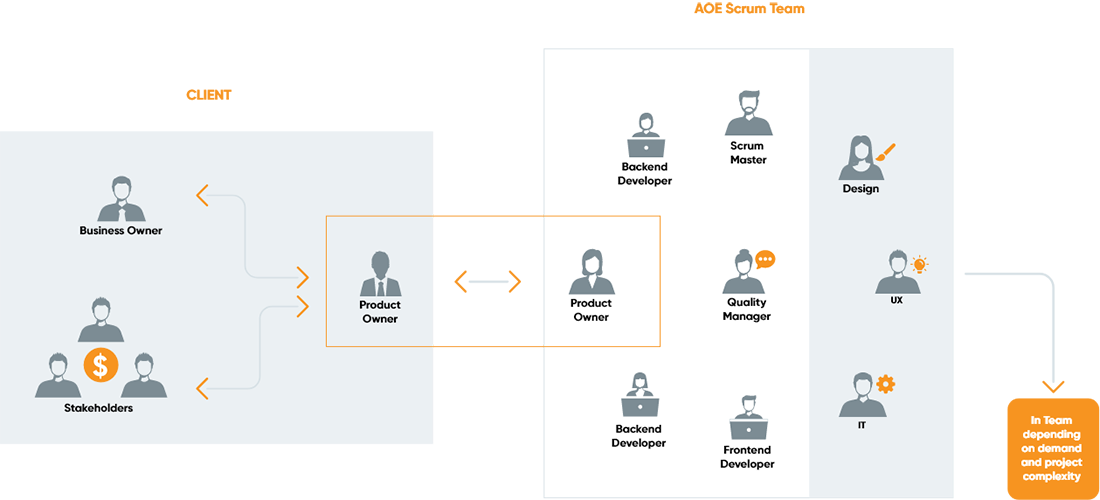Introduction
Working remotely has become the new normal for all of us, so we should try and get used to it. But what about the entrepreneurs who are implementing the Agile Software Development approach? Experts predict that the future of work will be remote; however, we say that the future has begun. Yes, the future which experts talked about is the present now.
In such times, many young entrepreneurs fret about how their agile team will conduct the daily stand-up meeting when they are dis-located. How will they achieve pair-programming when they are no more able to share the same desk at work? The pandemic has ruined the workspace culture, affecting emerging enterprises- this is what a few critics announce.
However, in contradiction to the above threat to work culture, the Agile Leadership Network’s chairperson, Marc C. Layton says that the Agile approach has such amazing strength that if he had to work with a remote team, he would only stick to using the Agile approach. He mentions that Agile enables him to fetch the functionality soon and restrict misunderstandings and risks.
How Do Agile Teams Work?

Let’s begin by understanding how Agile teams work and function. Well, more than a management style, Agile is a philosophy where a development team battles unpredictable circumstances interactively and incrementally.
Agile methodology is distinct from the traditional sequential and waterfall methods of software development. Here, the client is on the pedestal at all times, and the development process proceeds under his vision.
Hire remote developers and the team to take up the planning first and then undergo development feature by feature. Each feature development is further divided into bursts. Each burst undergoes development and testing in iterations, and the team reviews at the end of every cycle. If there’s anything to be added or any misconception from any team members, then the changes are made on the spot.

The Agile team speedily develops a Minimum Viable Product MVP after all the iterations are executed successfully. The client approves the MVP, and then the final product development begins.
Difference Between Agile and Traditional Teams

Agile Team Roles
An Agile team functions with three crucial and essential roles:-
product owner,
scrum master, and
the development team.
Product Owner: The prime stakeholder of the project who closely knows the client, the product, and the development team. The product owner takes complete responsibility for the internal development process and verifies if it meets client requirements.
Scrum Master: The scrum master is the team leader who clears the roadblocks and supports the project’s progress. They assure that the PO’s orders are implemented within the scrum team to deliver the complex project.
Development Team: The team working over a project under the PO’s orders and scrum master’s supervision performs cross-functional responsibilities to attain the project goals. Every member has a specific role in the development, but they execute teamwork to accomplish the objectives.

These are the fundamental essential member roles in an agile project, however, in a large organization like Bacancy, the organization structure is further divided into smaller agile teams that manage themselves.
Some additional roles in a large organization implementing agile methods include,
Architecture Owner: The person responsible for the organization’s architectural decisions directing the project by envisioning sub-teams. They are not solely setting the architecture direction, but facilitating the creation and evolution.
Integrator: The in-charge person of all the sub-teams in the system who participates in integration testing throughout the project development.
You May Also Like To Read: Story Points Vs Hours: Which one is Better For Agile Estimation
Structure of an Agile Team
Here is a pictorial representation of the structure of a large agile team following the team-of-teams architecture. The organization is divided into smaller teams as per the strategy Conway’s Law offered by Melvin Conway.
Every subteam handles multiple subsystems that work as independent agile teams delivering software development objectives on a timeline.


How Does a Remote Agile Software Development Team Functions?
Now that you know about an Agile team organization’s standard functioning and structure let us get to an agile team that works remotely. Some of the critical aspects to consider when you bring up the question of remote teams implementing the Agile method are:
- Agile teams are self-managing, so whether your development team is co-located or disjoint doesn’t matter.
- Remote work is executed around-the-clock, so don’t be bothered if your agile team is not in front of your eyes 24*7.
- There is no inter-dependency amongst members of your team. Remote Agile team works unitedly but individually.
- Best people make an agile team; so you shouldn’t really worry about remote work.
- Agility prospers with mental and physical health, which is best kept when a remote team works in their comfort zones.
Hence, from all the above points, one can say that implementing Agile methodology works best when executed by a remote team. It only achieves various aspects, but managing remote teams is indeed challenging.
Agility is a framework that remote agile teams follow. And with this, we can conclude that a remote agile team’s structure is a self-managing target.
Conclusion
At Bacancy Technology, we implement the Remote Agile software development approach and assure that you get beyond your project goals. We host 2 Agile Coach, 6 Scrum masters, 2 product owners, and 450+ developers to serve you excellence. Download this superlative infographic of remote agile team structure here.

